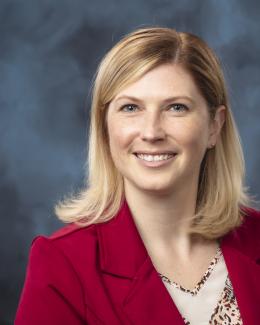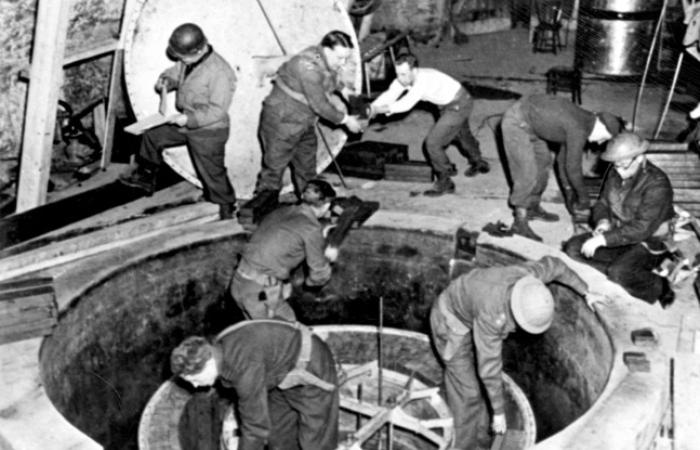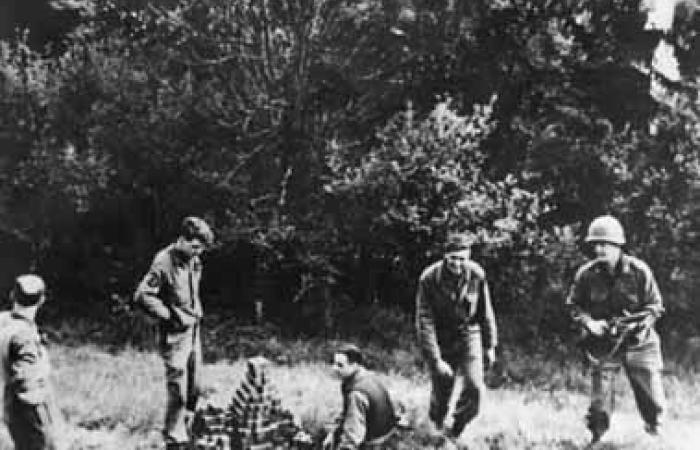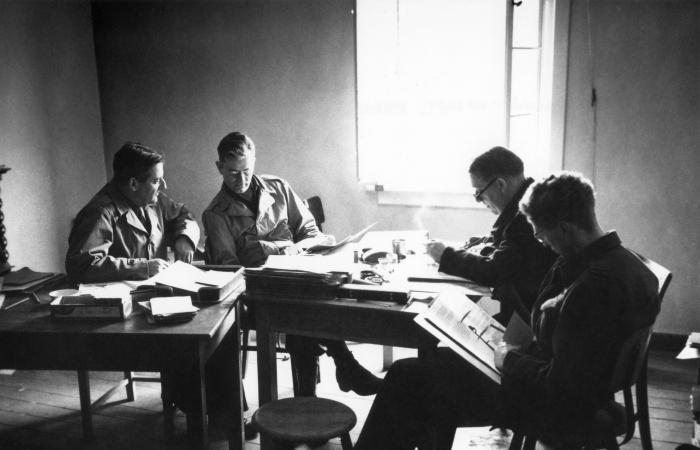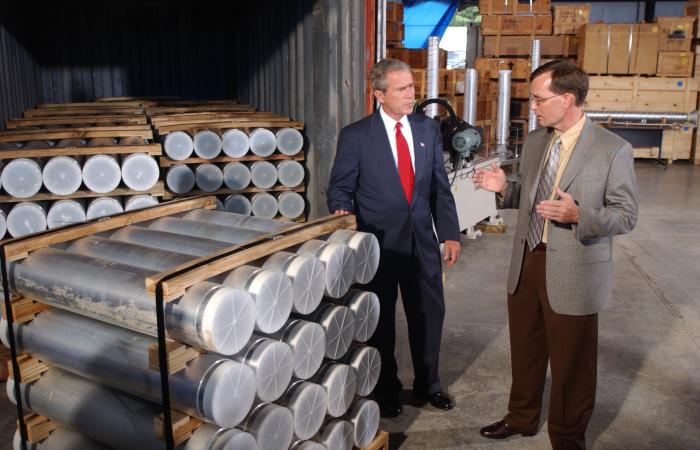Jason Oberhaus figures nobody studies engineering to become an intelligence analyst.
Yet he and his team of scientists and engineers in ORNL’s Fuel Cycle Analysis Group have been using their technical insights to support the lab’s national intelligence missions for years.
They’re part of a little-known legacy of engineers becoming intelligence-producing professionals that dates back to World War II.
The Manhattan Project drew scientists and engineers in many disciplines from across the country to swiftly advance understanding of atomic energy and develop the world’s first nuclear weapons. A lesser-known mission during the last two years of the war saw some of those same American engineers traveling around Europe to understand the state of the Nazi nuclear program.
This latter effort, known as the Alsos Mission, “recognized that people in R&D were essential to helping the intelligence people understand what the enemy was doing,” said Chuck Durant, director of ORNL’s Field Intelligence Operations Division.
These R&D experts were trained in the scientific method, not warfare or spycraft. But they joined a team of soldiers drifting through towns in Europe collecting information on the people and capabilities of Germany’s nuclear program. It was an important lesson that continues to shape the DOE’s approach to nuclear intelligence today.
“It’s a lot easier to teach a scientist how to do intelligence work than it is to teach an intelligence analyst Ph.D.-level science overnight,” Durant said.
Today, a team of engineers at ORNL carries on the legacy of the Alsos mission, ensuring nuclear fuel cycle expertise is a part of the national security decision-making process.
“We bring subject matter expertise to help the Intelligence Community solve nuclear nonproliferation challenges,” Oberhaus said. “We’re providing unique technical analysis and articulating these things to policymakers in a way that helps them understand the risks and the implications.”
Professionals who have participated in research, worked in nuclear facilities and handled nuclear equipment and materials have the experience needed to keep vital nuclear and radiological materials out of the hands of people who want to make bombs and other dangerous devices.
Even with years of real-world experience, the road from engineer to analyst isn’t easy. The Intelligence Community has its own unique set of standards and methods engineeers must learn.
“We teach them intelligence tradecraft — how to do the intelligence, how to write the reports,” Durant said. “We continue the tradition of deploying ORNL’s expertise in science and research to support policymakers at the highest levels.”
Leveraging open science research to solve challenges facing the nation today, ORNL can offer scientific expertise in areas outside the nuclear fuel cycle. Capabilities in innovative materials, high-performance computing, neutron research, sensors, robotics, cybersecurity and artificial intelligence aid in promoting resilience in economic and military industries.
“Science and technology are becoming more and more integral to national security,” said Durant. “We’re contributing in real time to help national policymakers understand some of the most complex challenges in our world.”
